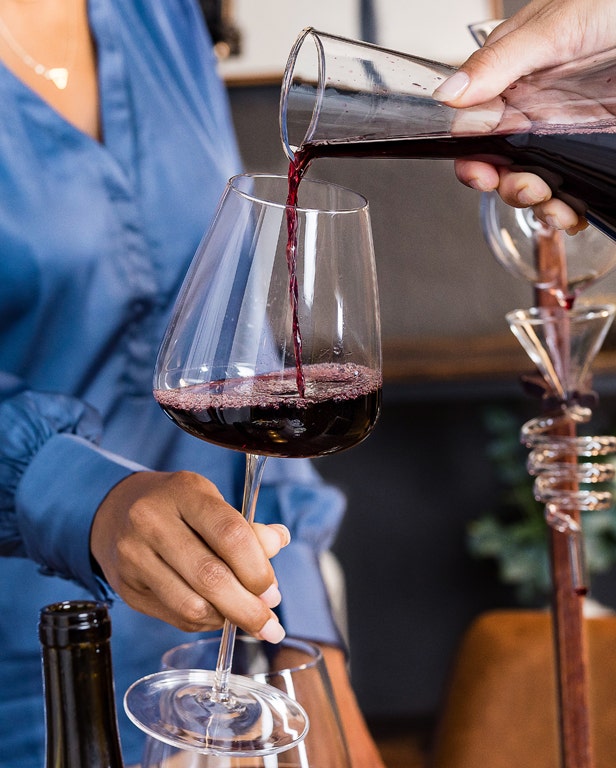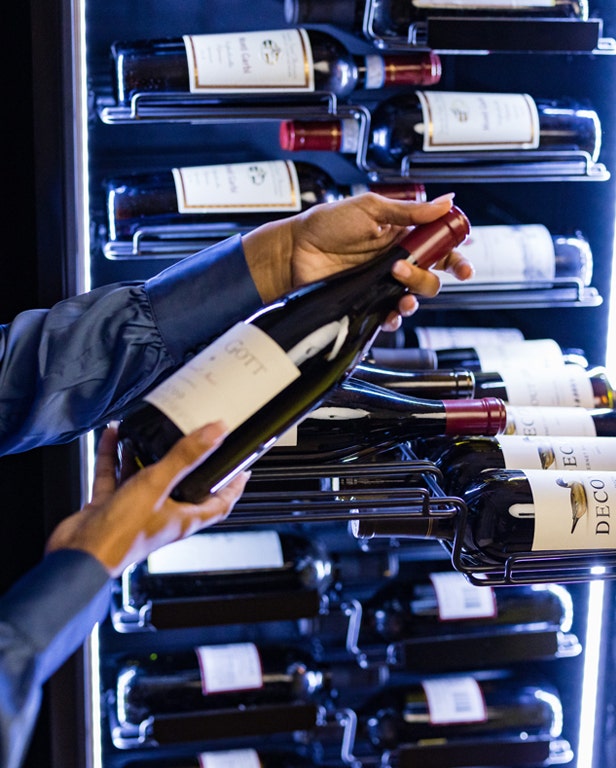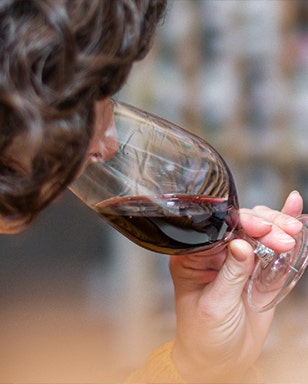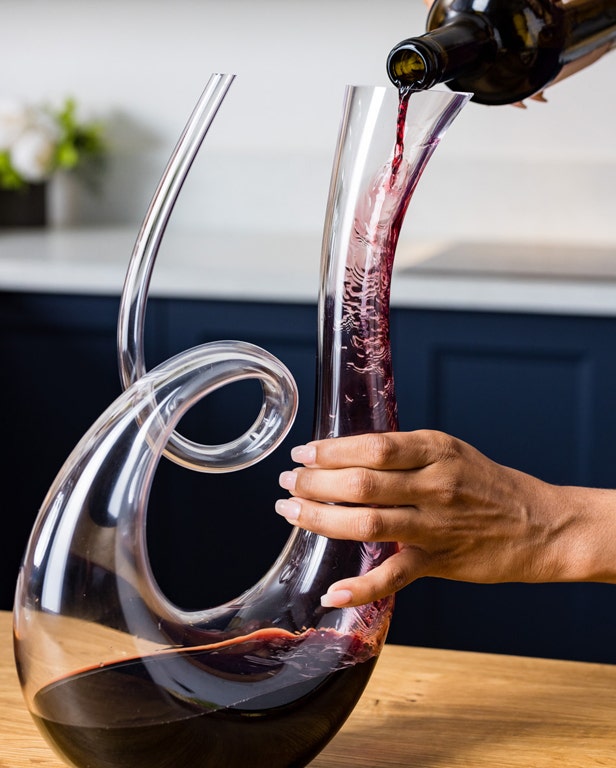Partners

Small Vineyards, Big Personalities:
The Unexpected Side of Bordeaux
The Left and Right Banks have long commanded the industry’s attention. But the real soul of Bordeaux is found in the Graves-Sauternes region. Backed by passionate vignerons with impressive viticultural lineages, the wines created in this special corner of the world have never taken the trendy—or easy—path. Instead, these winemakers have focused on producing high-quality bottles that span the entire flavor profile spectrum, from red to white, dry to sweet, affordable to precious, and everywhere in between. This diversity of world-class wines has only been made possible by the artisanal techniques, innovation, and, above all, the bold spirit of the local families who continue to pioneer the region’s wines forward day in and day out.

Overview
Known as the ‘Original Bordeaux,’ the Graves-Sauternes region is made up of four main sub-regions: Graves, Pessac-Léognan, Sauternes and Barsac. More than 450 growers cultivate vines in the region with a unique savoir-faire that ties them all together. From prestigious Classified Growths to approachable table wines, Graves-Sauternes is made up of small vineyards farmed by big personalities, which creates the foundation for long-lived wines that are known to leave a lasting impression. Today, Graves-Sauternes accounts for 6% of all vineyards in Bordeaux (totaling 17,600 acres) and accounts for an annual production of more than 32 million bottles.
Gateway of Bordeaux
Graves-Sauternes traces its historic roots along the Left Bank of the Garonne River. Located just south of the city of Bordeaux, the area has long been considered the entry point to the larger region. These days, it’s even easier to access than ever before with the high-speed train system that connects Bordeaux to larger cities across France.
Historical Context
Graves-Sauternes’ roots date back to the 1st century with the arrival of the Romans and their viticultural expertise. But the area’s reputation as one of the world’s top wine regions didn’t come along until 1533, when Pessac-based Château Haut-Brion was formally recognized as a Grand Cru—only to be followed by the Classification of 1855 just three centuries later. In 1936, the AOCs of Sauternes and Barsac were officially established, followed by Graves in 1937. Five decades later, in 1987, the AOC of Pessac-Léognan became officially recognized.
Regional Overview
The Graves-Sauternes region is made up of four appellations: Graves and Pessac-Léognan, which produce the region’s famous still red and dry white wines, and Sauternes and Barsac, the sweet wine appellations.
In addition to operating as an overarching area, Graves also acts as its own appellation, which is known for producing wines of elegance and style. The region is named after its signature gravelly soils, which play an integral role in the structure of its dry whites, dry reds and sweet wines. These wines are all hailed for their precision, balance and innate ability to pair with a variety of foods and occasions, from casual apéritifs to formal dinners. The wines of the Graves appellation are reputed for their artful blending; reds are known for their lovely tannic structure, and whites for their finesse and fruity, floral notes. Hearty fare pairs well with the refined red wines from the Graves appellation, such as roasted lamb, barbecue, and roasted potatoes, while fresh seafood like shellfish, oysters, and tuna complement the mineral-driven whites.
North of Graves lies Pessac-Léognan, which is prized for its mastery of power and subtle refinement. This “communale” appellation encompasses 72 estates spread across 10 villages, and is home to 16 Crus Classés de Graves, including the world-renowned Château Haut-Brion. Pessac-Léognan is defined by its mix of shingle, gravel and broken stone soils created by the flow of the Garonne, as well as its steep slopes that provide optimal vineyard drainage. Approximately 80% of wine produced in Pessac-Léognan is red and around 70% is exported annually. Its red and dry white wines are world-renowned for their incredible aging potential and their bold freshness and complexity. Any grilled, braised, or stewed course with beef, duck, pork, veal, or game dish is ideal for pairing with the earthy tannins of Pessac-Léognan’s red wines. And due to their fresh, citrus profile, Pessac-Léognan’s food-friendly white wines are a perfect match for seafood dishes such as roasted scallops and sushi.
The sweet wines produced nearby in Sauternes and Barsac are also coveted around the globe. While Sauternes is a wider region, famous for crafting boutique sweet white wines since the 16th century, Barsac is a communal appellation within greater Sauternes that derives its identity from limestone soils and fresh minerality. A combination of a labor-intensive process and the uniquely humid microclimate, created by the Sauternes region’s proximity to the Garonne and Ciron rivers, allows for the development of botrytis, otherwise known as noble rot. The 140 winegrowers in the area are well-versed in working with the fungus that shrivels and concentrates the grapes and use their long-standing knowledge to produce the region’s acclaimed Sémillon, Sauvignon Blanc and/or Muscadelle-based wines. As per the Classification of 1855, Sauternes and Barsac were the most highly calcified regions, clocking in with a distinguished 27 Crus Classés. Known for their honeyed, candied flavor profile and incredibly complex aromas (more than 50 per glass), Sauternes and Barsac wines are capable of very long aging — and once a bottle is opened, it will remain fresh for up to a month. These sweet wines pair perfectly with any number of dishes — such as cheese and charcuterie, foie gras, savory dishes, shellfish, fresh fruit, and desserts — or they can be enjoyed on their own as an apéritif.
Small Vineyards, Big Personalities
Beyond the esteemed growing conditions and natural phenomena of botrytis, the heart of Graves-Sauternes is found in its small-yet-fierce growers, who represent the living legacy of the Grands Vins de Bordeaux. From prestigious Classified Growths to approachable daily drinkers, the vignerons in the region balance between innovation and respect for regional tradition. This blend of old and new continue to make the ancient winegrowing region one of the most forward-thinking and value-driven areas for reds, dry whites and sweet wines of extraordinary complexity and global appeal.
For more information, visit the Graves, Pessac-Léognan or Sauternes-Barsac websites.















